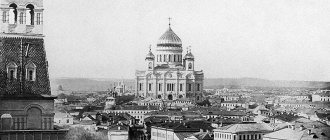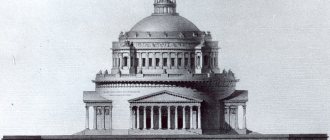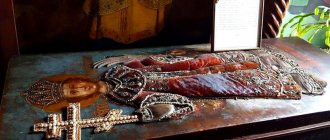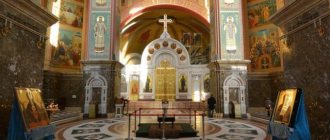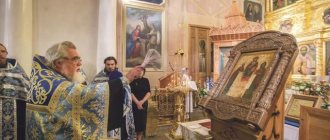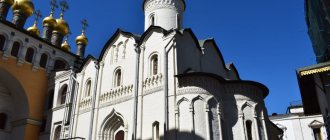Mir
Russia Smolensk region Smolensk Holy Assumption Cathedral (Smolensk) Map is loading…
{"format":"leaflet","minzoom":false,"maxzoom":false,"limit":50,"offset":0,"link":"all","sort":[""], "order":[],"headers":"show","mainlabel":"","intro":"","outro":"","searchlabel":"\u2026 \u0441\u043b\u0435\ u0434\u0443\u044e\u0449\u0438\u0435 \u0440\u0435\u0437\u0443\u043b\u044c\u0442\u0430\u0442\u044b","default":"","import-annotation":false,"width ":"auto","height":"350px","centre":{"text":"","title":"""link":"""lat":54.782634999999999081410351209342479705810546875,"lon": 32.045287000000001853550202213227748870849609375,"icon":""},"title":"","label":"","icon":"","lines":[],"polygons":[],"circles":[ ],"rectangles":[],"copycoords":false,"static":false,"zoom":8,"defzoom":14,"layers":["OpenStreetMap"],"image layers":[] ,"overlays":[],"resizable":false,"fullscreen":true,"scrollwheelzoom":true,"cluster":false,"clustermaxzoom":9,"clusterzoomonclick":true,"clustermaxradius":80, "clusterspiderfy":true,"geojson":"","clicktarget":"","showtitle":true,"hidenamespace":false,"template":"","userparam":"","activeicon": "","pagelabel":false,"ajaxcoordproperty":"","ajaxquery":"","locations":[{"text":"\u003Cb\u003E\u003Ca href=\"/palomnik/%D0% A1%D0%B2%D1%8F%D1%82%D0%BE-%D0%A3%D1%81%D0%BF%D0%B5%D0%BD%D1%81%D0%BA%D0%B8 %D0%B9_%D0%BA%D0%B0%D1%84%D0%B5%D0%B4%D1%80%D0%B0%D0%BB%D1%8C%D0%BD%D1%8B%D0 %B9_%D1%81%D0%BE%D0%B1%D0%BE%D1%80_(%D0%A1%D0%BC%D0%BE%D0%BB%D0%B5%D0%BD%D1% 81%D0%BA)\» title=\»\u0421\u0432\u044f\u0442\u043e-\u0423\u0441\u043f\u0435\u043d\u0441\u043a\u0438\u0439 \u043a\u0430\u0444\u043 5\ u0434\u0440\u0430\u043b\u044c\u043d\u044b\u0439 \u0441\u043e\u0431\u043e\u0440 (\u0421\u043c\u043e\u043b\u0435\u043d\u0441\u0 43a)\»\u003E\u0421\ u0432\u044f\u0442\u043e-\u0423\u0441\u043f\u0435\u043d\u0441\u043a\u0438\u0439 \u043a\u0430\u0444\u0435\u0434\u0440\u0430\u0 43b\u044c\u043d\u044b\u0439 \u0441\u043e\u0431\u043e\u0440 (\u0421\u043c\u043e\u043b\u0435\u043d\u0441\u043a)\u003C/a\u003E\u003C/b\u003E\u003Chr /\u003E\ u003Ca href=\ "/palomnik/%D0%A1%D0%B2%D0%BE%D0%B9%D1%81%D1%82%D0%B2%D0%BE:%D0%90%D0%BD%D0%BD% D0%BE%D1%82%D0%B0%D1%86%D0%B8%D1%8F\" title=\"\u0421\u0432\u043e\u0439\u0441\u0442\u0432\u043e:\u0410\u043d \u043d\u043e\u0442\u0430\u0446\u0438\u044f\»\u003E\u0410\u043d\u043d\u043e\u0442\u0430\u0446\u0438\u044f\u003C/a\u003E: \u0 412\u043e\u0437\ u0432\u0435\u0434\u0435\u043d \u0432 \u043f\u0430\u043c\u044f\u0442\u044c \u043e \u0433\u0435\u0440\u043e\u0438\u0447\u0435\ u0441\u043a\u043e\u0439\u043e\ 1609\u20141611 \u043e\u0432 \u043d\u0430 \u043c\u0435 \u0441\u0442\u0435 \u043e\u0434\u043d\u043e\u0438\u043c\u0451\u043d\u043d\u043e\u0433\u043e \u0441\u043e\u0431\u043e\u0440\ u0430 XII \u0432\u0435\u043a\ u0430","title":"\u0421\u0432\u044f\u0442\u043e-\u0423\u0441\u043f\u0435\u043d\u0441\u043a\u0438\u0439 \u043a\u0430\u0444\u0435\u0 434\u0440\ u0430\u043b\u044c\u043d\u044b\u0439 \u0441\u043e\u0431\u043e\u0440 (\u0421\u043c\u043e\u043b\u0435\u043d\u0441\u043a)","link":""" lat ":54.782634999999999081410351209342479705810546875,"lon":32.045287000000001853550202213227748870849609375,"icon":""}],"imageLayers":[] }
54.782635; 32.045287
Russia, Smolensk
Smolensk, Smolensk region
Russia
Cathedral of the Assumption of the Blessed Virgin Mary
- Cathedral of the Smolensk diocese of the Russian Orthodox Church. Located in the central part of the city of Smolensk on Cathedral Hill. Erected in memory of the heroic defense of Smolensk in 1609-1611 on the site of the 12th century cathedral of the same name.
History[[edit]h2>
At the end of the 11th century, Smolensk became the appanage city of the grandson of Yaroslav the Wise - Vladimir Monomakh. The prince attached great importance to Smolensk. In 1101, he founded a large stone cathedral here in honor of the Dormition of the Mother of God. Vladimir Monomakh took part in the consecration of the cathedral and at the same time placed in it the image of the Mother of God Hodegetria.
The formation of the ancient architectural ensemble on Cathedral Hill dates back to the 40s of the 12th century. Its northern, highest platform was occupied by the Monomakh Cathedral. To the northeast of the cathedral on the hillside there was a high brick tower, to the south there was a small princely church. In addition to these buildings, there were other buildings on Detinets, but they were wooden. The village was surrounded by a wall with towers and a rampart. This is known from excavations in the 60s carried out by an expedition of the Institute of Archeology under the leadership of Professor N. N. Voronin and Doctor of Historical Sciences P. A. Rappoport.
Until the beginning of the 17th century, despite the turbulent historical events that took place in Smolensk, the cathedral retained its original architectural forms. But the Time of Troubles prepared a sad fate for the Orthodox shrine. In 1609, the Polish king Sigismund launched a military campaign against Russia. In September of the same year, the Polish army besieged Smolensk.
Soon all the settlements around the city were burned, only the temples survived. The heroic defense of Smolensk lasted 20 months. Only on June 3, 1611, Smolensk was captured.
During the assault on the city, the powder magazines located in the thickness of the Cathedral Mountain were blown up. The explosion destroyed a significant part of the cathedral - almost the entire top. The Poles covered the building with boards and built a church in it.
After the return of Smolensk to Moscow, an attempt was made to rebuild the ancient Monomakh Cathedral, but repairs were considered impossible. In 1674-75 the building was finally dismantled. The pious Tsar Alexei Mikhailovich, taking care of the construction of Orthodox temple churches in the cities returned from Poland, on November 30, 1676, sent Smolensk Archbishop Simeon a plan for the construction of the Smolensk Assumption Cathedral, which was ordered to be founded on the site of the former cathedral church. Foreman Alexei Korolkov was sent from Moscow to carry out construction work, and 2 thousand silver rubles and 399 pounds of iron were allocated from the treasury.
On August 2, 1677, the cathedral was founded. Construction work went so quickly that after 1.5 years the walls were erected up to the round windows. For his vigilant care in this matter, the tsar elevated Archbishop Simeon to the rank of metropolitan and granted him six horses. But from 1679, work on the construction of the cathedral had to be suspended, and for a long time.
Master A. Korolkov, foreseeing a shortage of materials, with the permission of his superiors, canceled the 4th wall of the iconostasis, so the edges of the altar were not closed with the main walls, and when they began to build higher walls, it was separated along its entire height from the northern and southern walls. As a result, a decree was issued to stop work. In 1712, through the efforts of His Grace Dorotheus, work resumed again. Moreover, in order to prevent danger, the altar was reduced in length by 3 fathoms, which resulted in a discrepancy between the length and width of the altar.
The Right Reverend Gideon, having ascended to the Smolensk See in 1728, took decisive measures to complete the construction of the cathedral. The author of the project for the completion of the cathedral is considered to be the architect Anton Ivanovich Shedel. The top of the cathedral was brought out and crowned with 7 chapters. The walls and ceilings are decorated with icon paintings, the iconostasis is painted, and on August 13, 1740 the cathedral was consecrated. But the fragility of the cathedral was immediately revealed - dangerous cracks appeared in the vaults and domes. It was decided to replace the plank roof with a tin one.
By 1760, at this time the Smolensk See was ruled by His Eminence Parthenius, the large stone dome completely collapsed. Then, at the request of the bishop, permission was given for a new alteration of the upper vaults. Empress Catherine II donated 11,900 rubles for this, in addition, the Right Reverend himself collected significant donations - 45 thousand rubles. With this money, Bishop Parthenius not only overhauled the cathedral, but also magnificently decorated it. Architect Pyotr Obukhov rebuilt the domes of the cathedral. Instead of seven chapters, 5 were made. Although there was no symmetry, they were built firmly. Instead of a large stone dome, a wooden one was made. To strengthen them, iron ties were stretched under the upper vaults and installed in the basements of the cathedral.
In 1772, the cathedral was finally built, and since then no changes have been made to the appearance of the cathedral.
Church of Vladimir Monomakh
The temple has been located on this site since 1101. It was founded by Vladimir Monomakh and was the first monument of monumental architecture in the Smolensk region. However, during the Time of Troubles, when the city was taken by storm after a 20-month siege, the Polish troops of Sigismund III blew up the powder magazines located in the thickness of the Cathedral Mountain (according to other sources, the reserves of gunpowder were in the cathedral itself), and the upper part of the temple collapsed. Residents who had taken refuge in the church died under the rubble. Subsequently, the Poles built a wooden ceiling over the destroyed temple and built a church in it.
Shrines[[edit]h2>
The main shrine of the cathedral is the Smolensk Icon of the Mother of God Hodegetria
. Two cast-iron stairs lead to it, converging on the platform near the icon. The icon is located at the right support pillar of the temple. At the left support pillar there is another shrine - the shroud “Entombment” from the workshops of Euphrosyne Staritskaya (1561). The Kazan Icon of the Mother of God, taken to the left side chapel from the altar after the myrrh-streaming on November 22, 1991. Icon of St. Seraphim of Sarov - became especially revered after the myrrh-streaming on March 14-15, 1994. A large wooden Crucifix on the right side of the temple, its painting is attributed to V. Vasnetsov. The five-tiered iconostasis of the cathedral was made in the 1730-40s. carver S. Trusitsky with assistants P. Durnitsky, F. Olitsky and S. Yakovlev. The icons (later renewed) were probably painted by the same masters.
Modern view of the cathedral
In 1740 the cathedral was consecrated. However, twenty years later the large stone dome collapsed along with the western chapters. Now the cathedral needed reconstruction of the upper vaults and major repairs. Catherine II herself sent 11,900 rubles for restoration. With the empress's money and numerous donations, a large-scale reconstruction was carried out.
Architect Pyotr Obukhov removed the seven-domed crown and crowned the cathedral with a traditional five-domed one; instead of a large stone dome, he installed a wooden one. In 1772, the temple acquired the appearance in which we know it now. It combined the features of ancient Russian architecture and Ukrainian baroque. Its facades have an abundance of baroque decor, and the interior is a huge space filled with light and air.
The 19th and 20th centuries turned out to be difficult for the cathedral. The cathedral miraculously survived the Patriotic War of 1812. Having taken Smolensk, the French not only did not destroy the temple, but also guarded it. Only the helmet of the patron saint of Smolensk, St. Mercury, has disappeared. During the Great Patriotic War of 1941–1945, the cathedral also survived, but forever lost its main shrine - the Smolensk miraculous icon of the Mother of God “Hodegetria”.
History of construction
Smolensk City Cathedral is one of the most famous and majestic churches in Russia. Its building towers above all city buildings. The appearance of the temple became possible thanks to Vladimir Monomakh, who laid its foundation at the beginning of the 12th century (1101). This is confirmed in the Hypatia Chronicle.
Assumption Cathedral in Smolensk
Monomakh oversaw the construction of the central city cathedral. At that time, stone churches were rare in the Smolensk principality. The prince donated to the newly built cathedral the image of the Mother of God, passed down in his family from generation to generation and glorified by miracles - the “Hodegetrya” icon. This event had enormous political significance, turning Smolensk into the capital city of the principality. In 1150, the consecration of the Assumption Church was celebrated.
Interior decoration
Photo gallery
Ukrainian masters worked a lot on the interior decoration of the cathedral in 1730-40: Sila Trusitsky, Petro Durnitsky, Fyodor Olitsky, Andrey Mastitsky. The same masters painted icons for the iconostasis.
The compositional basis of the five-tiered iconostasis is made up of columns entwined with tiered cornices. Between them are carved panels framing the painting. The columns and cornices are covered with magnificent gilded carvings: motifs - bunches of grapes, sunflower flowers, oak, maple. A special feature of the carving is its two-layer nature: another layer, deep and transparent, is superimposed on top of the lower openwork layer. Along with gilding, many profiles of the iconostasis are silvered; they set off and diversify the golden shimmer of the main carving.
There is an assumption that the icons of the cathedral were painted by the creator of the iconostasis, Trusitsky, but perhaps also by icon painters of the local school - the first historian of Smolensk, Nikifor Murzakevich, writes about it.
Almost all the icons of the pre-altar row were rewritten or restored several times. The first restoration was carried out in 1767-1772, when the iconostasis was dismantled and taken out of the cathedral to specially prepared premises, where it was re-gilded and the icons were restored.
In 1820, under the Reverend Joseph, “the gilding on the iconostasis was renewed to its full height right up to the vaults, the painting on the icons was corrected and the walls were corrected.” In 1888, all the icons were rewritten by the Moscow artist Morozov. In 1900, the Vladimir painter Parilov again copied the icons in the altar of the Odigitrievsky limit.
In 1977-78, a number of icons of the local Deesis and prophetic order and icons from round medallions of the 5th tier were cleared by restorers of later records. Of all the paintings on the iconostasis, only one icon, “The Great Bishop,” has been preserved in its original form. Christ is depicted sitting on a gold-plated, richly ornamented throne, dressed in a sakkos and crown decorated with gold patterns, with a blessing right hand and a scepter and orb in the other hand. The icon is painted in a surprisingly soft coloring of tart, warm tones.
The altarpiece of the Queen of Heaven in full height with the Child of God in her arms has been preserved in its original form. A special feature of the interior of the Assumption Collection is the abundance of wooden sculptures in it, as well as the pulpit, which is an example of carved art. The main motifs of the carving of the iconostasis - motifs of the magnificent Ukrainian baroque - are repeated in the design of the bishop's seat on the right and the magnificent pointed canopy placed above the throne on carved gilded columns.
Detinets on Cathedral Hill
The first mention of Smolensk is in the chronicles of 863. The cultural layer on Cathedral Hill, where the temple is located, ranges in thickness from 1.2 to 5.6 meters. Numerous remains of wooden buildings, bronze and copper objects, glass items, and jewelry were found here. During the excavations, it was possible to establish that the peak of development on the mountain occurred in the 12th-13th centuries.
Detinets is located on the left bank of the Dnieper River, on Mount Sobornaya. The first settlers appeared here in the VI-VIII centuries. No traces of human presence during the 9th-10th centuries were found. It was in the 11th century that the mountain turned into Detinets. Then it was a continuous development of wooden houses on an area of 3 hectares.
